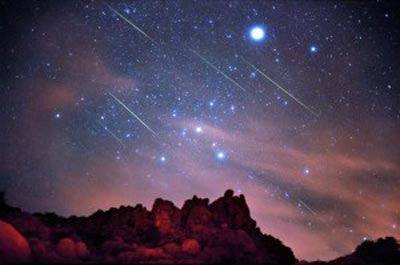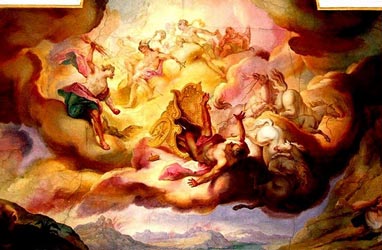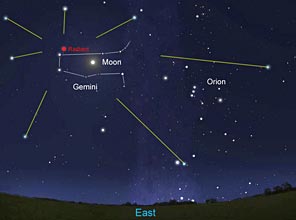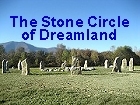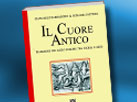| English Page |
Shooting Stars and ancient Myth |
 |
 |
| 24 December 2011 | |||
Shooting stars as they are known to have been a spectacle of awe and wonder for all of humanity since the primordial days. They were and are still seen as signs from some sort of mysterious realm; omens bringing some sort of message that needed to be deciphered. What's certain is that the spectacle of streaking balls of light falling from the dark and endless skies towards our planet is a site that did not leave one indifferent. In truth, shooting stars are not stars of all. There just fragments of meteorites and dust particles from some larger bodies located in space which are in the proximity of earth. The meteorites that get attracted to our planet to force of gravity streak through the atmosphere and burn up to friction. Hence the name "shooting star". So December has rolled around and it's that time of the year when we are greeted by the Geminids, which peak around 13 - 14 December. Though perhaps not the most abundant in number of meteorites, this meteor shower is rather particular due to the source of the meteors themselves, which is the near-Earth asteroid 3200 Phaethon. Most meteor showers come from comets, so having an asteroid as a parent makes the Geminids a bit of an oddball. Every year in mid-December, Earth runs through a trail of dusty debris that litters the orbit of 3200 Phaethon. Comets vaporizing in hot sunlight naturally produce such debris trails, but rocky asteroids like 3200 Phaethon do not. At least they're not supposed to. The incongruity has baffled researchers since 1983 when 3200 Phaethon was discovered by NASA's IRAS satellite.
One clue: 3200 Phaethon travels unusually close to the sun. The asteroid's eccentric orbit brings it well inside the orbit of Mercury every 1.4 years. The rocky body thus receives a regular blast of solar heating that might somehow boil jets of dust into the Geminid debris stream. Personally, I find that the name Phaeton for the asteroid in question to be appropriate given that this asteroid’s path is near our sun. It calls to mind the legend of the God of Phaethon in his dissent to the Earth. Phaeton myth Mainstream society knows of the myth of Phaethon as being linked to the Greco-Roman pantheon; but in truth this myth goes way beyond these two ancient civilizations perhaps as far back as the start of humanity itself. The myth states that the God Phaethon came down from the skies in his fire chariot to a land that corresponds to modern day Piedmont, near the city of Turin. Phaethon saw that humanity was in a mix of primordial chaos, so he wished to do something to bring about enlightenment and well-being to the people of this planet. He entrusted his two assistants with the task of building a giant stone circle. These two assistants who seem to be forged from gold crafted the stone circle from which Phaethon would endow people of the land with his teachings. From within his circle, Phaethon taught man all of the various arts: astronomy, mathematics, metal working, alchemy and agriculture, and much more. He gave introductions to a special group of men who would become the leaders of mankind; and pass down his teachings long after he had departed from the Earth. Supposedly, it was this first stone circle that gave rise the ancient Druid order on the planet. It's rather curious that the name of the asteroid responsible for this meteor shower bears the same name as the God who bestowed knowledge upon mankind. Indeed, we are nearing the winter solstice which is a special occasion for Druidic culture - the culture supposedly introduced by this figure. It's almost too tempting to ask yourself if the person who discovered the asteroid behind the Geminides wasn't involved in some form of Druidic culture.
Fun Facts on the Geminides 1: The Geminids are so named because the meteors seem to radiate from the constellation of Gemini. However, they are in fact caused by the Earth crossing the dusty debris trail of an asteroid (or possibly an extinct comet) called 3200 Phaethon, which then enters and incinerates in the Earth's atmosphere producing the spectacular Geminids Meteor Shower. 2: The Geminids Meteor Shower begins around the 7th of December and peaks on the 13th/14th, when more than 50-80 meteors can be seen per hour. However, each year the intensity of the showers seems to be increasing and recent Geminids have produced as many as 120–160 meteors per hour. 3: The Geminids are unique in the Solar System in that most annual meteor showers are identified with active comets, where as the Geminids are thought to be caused by the Palladian asteroid known as 3200 Phaethon. It has been speculated that when Phaeton was young it got caught in Saturn's orbit and now passes by the Earth every year leaving behind its debris trail. In 2093, the asteroid will make one of its closest approaches and pass within 3 million kilometres of the Earth. 4: The Geminids are one of the few meteor showers that can be seen from both the northern and southern hemispheres. The Geminids are also able to reach deeper and burn lower in Earth's atmosphere than many other meteor storms, creating beautiful long arcs which last a second or two. 5: Another extra special feature of the Geminids is the color of the meteors it produces, which in addition to glowing white also can appear yellow, blue, red and green. 6: The Geminids were first discovered in 1862 but it’s the parent asteroid 3200 Phaethon wasn't identified for almost another 150 years, in 1983. |
 -->
-->
